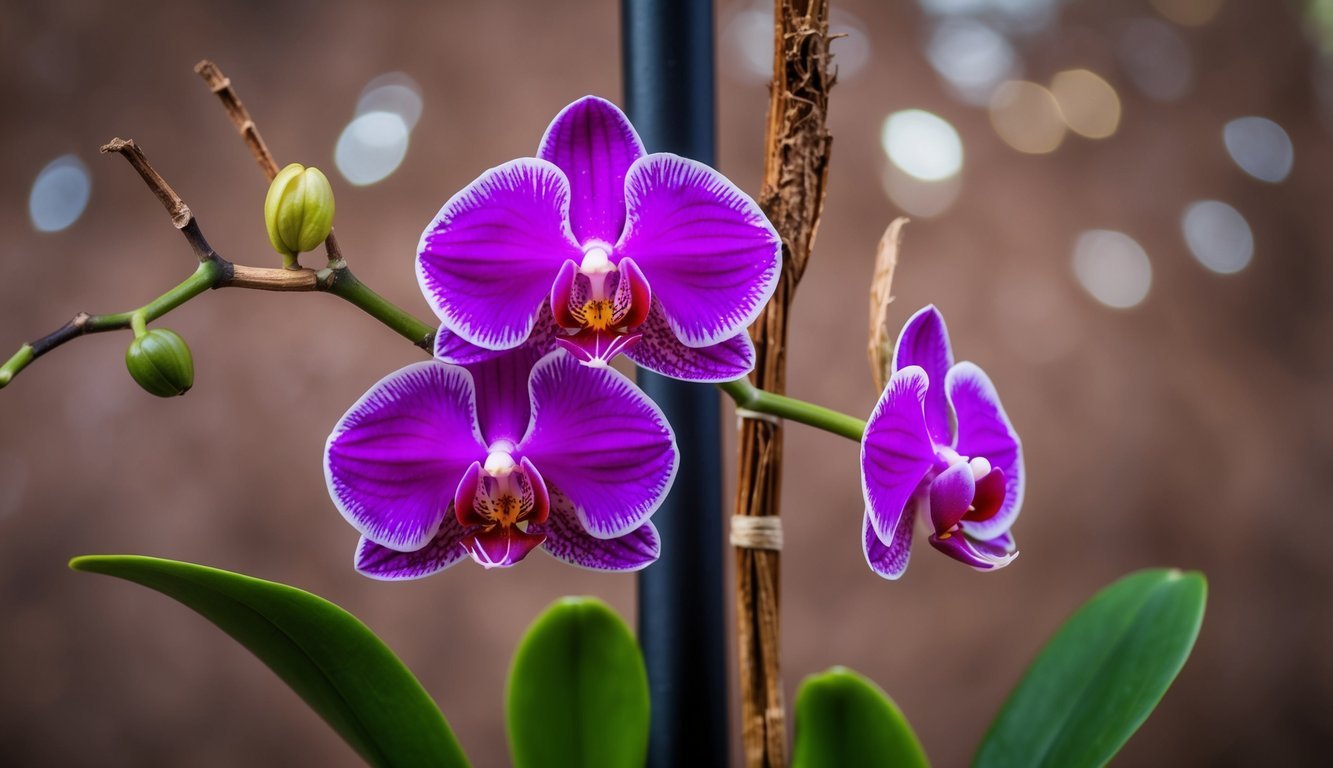
Orchids are treasured houseplants, admired for their stunning beauty and sophisticated presence.
However, they come with their own set of challenges.
Spotting brown stems can be a cause for concern, particularly if you’re uncertain about what’s wrong.
Renowned orchid expert Melissa Strauss sheds light on the common reasons behind this issue and shares helpful tips for orchid care.
As I delved into the world of orchid farming, I faced a myriad of challenges unique to these elegant plants.
Orchids can thrive indoors, but they demand specific care and attention—a skill that takes time to develop.
Their sensitivity to light and moisture means that even small missteps can lead to noticeable signs of distress.
Understanding Orchid Needs
For those venturing into the realm of orchid care, understanding the factors that might affect your plant is essential.
While some issues may require immediate action, others are simply part of the orchid’s natural lifecycle.
Given their longevity, it’s unusual for orchids to die solely due to age.
Brown and dried stems are among the common problems orchid owners encounter.
Healthy stems should appear green and pliable, while any shift toward brown and dryness signals that something is amiss.
In this discussion, we’ll pinpoint the main culprits behind this condition and what you can do to remedy it.
Key Reasons for Brown Orchid Stems
Brown stems on orchids can stem from several factors, but not all are serious concerns, and they often don’t appear suddenly.
Typically, before a stem dries out completely, you might notice a yellowing phase.
The three leading contributors to this issue are dormancy, nutrient deficiency, and overwatering.
Dormancy
Dormancy often presents the least concerning explanation for brown stems.
After an orchid has flowered, it expends significant energy, which can lead to yellowing and eventual shedding of older leaves.
This process is entirely normal and part of the plant’s growth cycle.
Once the blooming phase concludes, the orchid may no longer need the stem, leading to its natural drying and withering as the plant focuses on future growth.
Nutrient Deficiency
On the other hand, nutrient deficiencies can present a more pressing issue.
When orchids experience either excess or lack of nutrients, their stems can start to deteriorate.
Fortunately, correcting these imbalances is usually straightforward, though affected stems might not recover.
Orchids tend to be heavy feeders, particularly during their growing seasons.
Utilizing a specially formulated orchid fertilizer can help ensure they receive the nutrients necessary for flourishing, as regular potting mix may not hold these essential elements well.
Additionally, if your water contains high calcium levels, nutrient buildup could result in deficiencies.
Overwatering
Lastly, overwatering is a frequent culprit leading to issues such as root rot.
This condition often triggers yellowing, browning, and wilting in both the leaves and stems, making it one of the most prevalent causes of orchid decline.
Given that orchids naturally grow as epiphytes with their roots exposed, they are particularly susceptible to root rot when planted in standard media.
When the potting mix remains consistently damp, it can break down and create a breeding ground for fungi and pathogens, which can damage the roots.
If the roots begin to rot, they can no longer supply the necessary nutrients to sustain the entire plant.
Recommended Steps to Take
Once you’ve identified the reasons behind your orchid’s troublesome brown stems, it’s time to evaluate the next steps.
You typically have two options: leave the stem as is or remove it entirely.
If the stem has completed its lifecycle post-bloom, it may be advisable to leave it alone.
For healthy plants entering dormancy, keeping the flower stalk allows the orchid to absorb remaining nutrients, supporting root growth during this rest phase.
However, if the stem is completely dried out and hasn’t fallen off naturally, consider trimming it once it has thoroughly dried.
Alternatively, you might find it necessary to prune the brown stem.
This decision not only impacts the overall appearance of your orchid but can also be vital for its health.
Removing a dying or unattractive flower stalk can enhance your plant’s aesthetic appeal.
From a health standpoint, especially if you’re dealing with rotting symptoms, pruning the stem can be crucial in halting the spread of pathogens.
If the plant suffers from nutrient deficiency, hacking off a struggling stalk can help divert resources to more robust portions of the plant.
If blooms or buds remain on the stem, you may opt to postpone cutting it.
However, it’s important to note that the flowers may not develop fully if the stem is in poor condition.
For monopodial orchids, if you detect discoloration after flowering, you can prune the stem above a node close to the rhizome to encourage a new flower spike.
In contrast, with sympodial orchids, pruning near the rhizome is preferred, regardless of the node, since their stems only bloom once.
In conclusion, understanding the reasons behind brown, dried orchid stems and the appropriate responses can help you maintain a vibrant and healthy orchid collection in your home.
Happy orchid tending!
Source: Epicgardening

